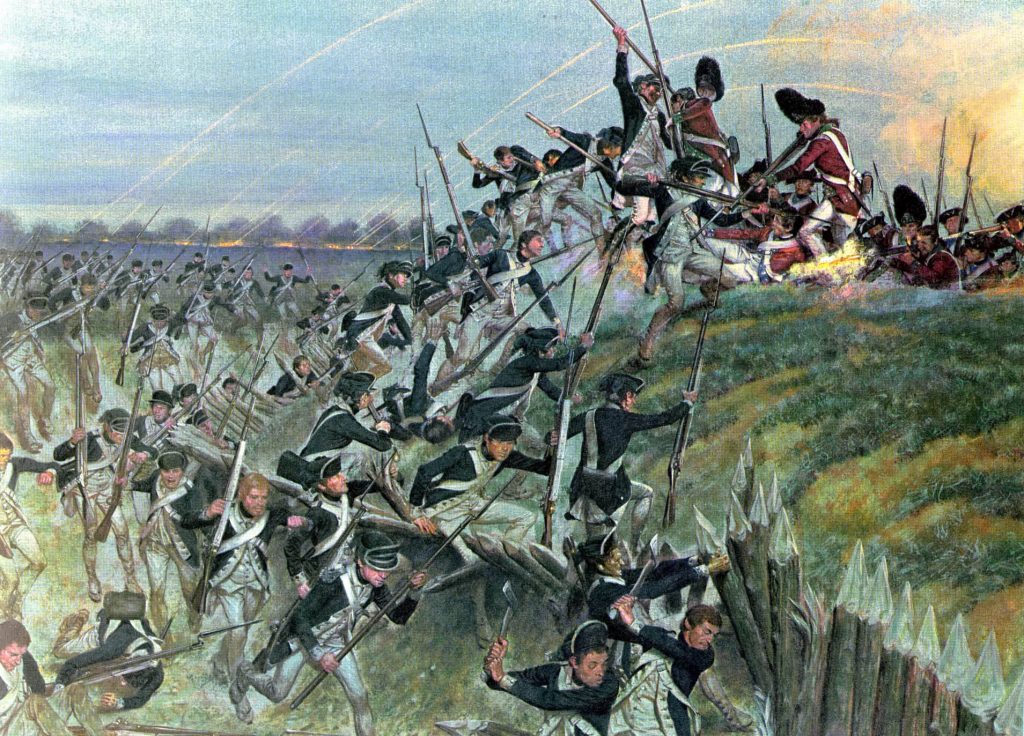
Article Summary: Historic Sites In North Carolina
Historic Sites In North Carolina. More Than Just Parks has 10 incredible must-see sites for you.
I’ve been to so many of these amazing places since retiring from teaching in 2018. Did I mention that I taught history? I spent a lifetime teaching about the history behind these momentous sites. Then I got to see them firsthand. And now I’m sharing the stories of these incredible places with you. It doesn’t get any better than that!
I’m going to give you my list of the 10 Historic Sites In North Carolina that you’ll want to see.
To be clear, this list includes national park sites (as in sites managed by the National Park Service) as opposed to national parks. It also includes sites not managed by the National Park Service, After all, we’re more than just parks!
If you are planning a trip to North Carolina then you might want to pick up a copy of The Great American Trivia Tour – North Carolina: The Ultimate Book of Fun Facts and Trivia from History to Sports You Never Knew About the Tar Heel State! by Jordan West.
Without further ado, let’s dive in.
Table Of Contents: Historic Sites In North Carolina
Historic Sites In North Carolina
- Top 10 Historic Sites In North Carolina
- Top 5 Historic Sites In North Carolina
- 5. Overmountain Victory National Historic Trail
- 4. Fort Raleigh National Historic Site
- 3. Carl Sandburg Home National Historic Site
- 2. Guilford Courthouse National Military Park
- 1. Wright Brothers National Memorial
- List Of Historical Sites In North Carolina
- Why Trust Us About Historic Sites In North Carolina?
- Meet The Parks Brothers
- We Hope You’ll Follow Our Journey
Top 10 Historic Sites In North Carolina
10. Fort Fisher
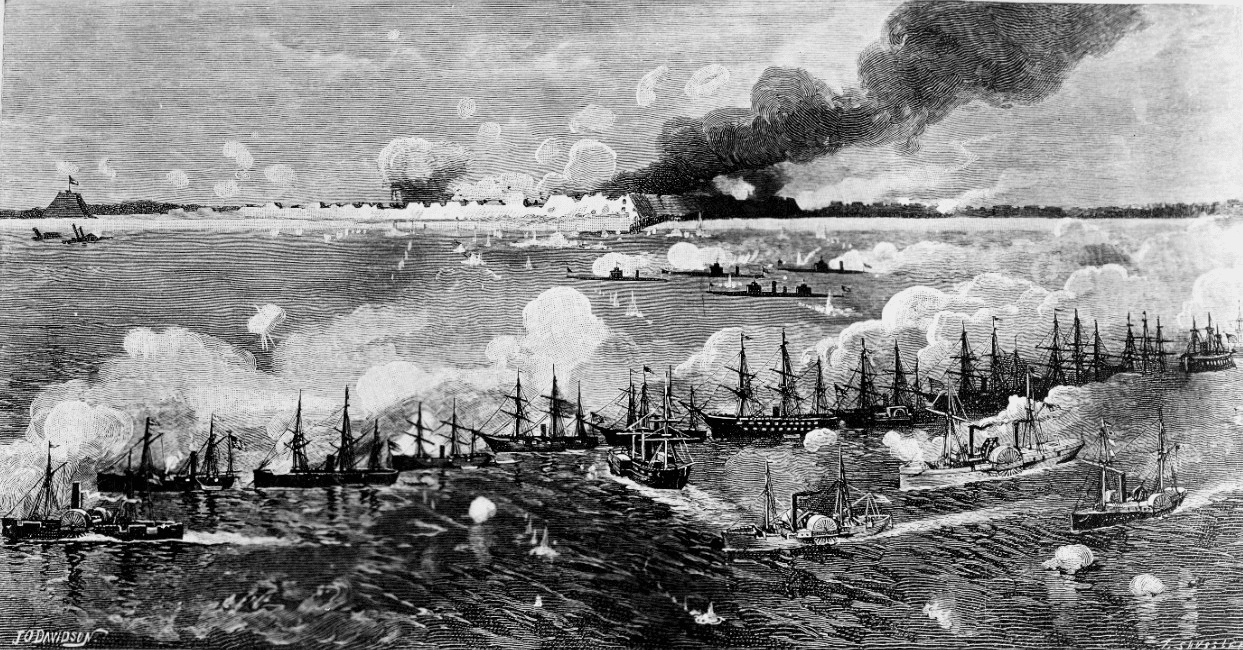
North Carolina is known for its arts and culture, being a pioneer in aviation, and beautiful state parks with massive mountains. This southern state features friendly people, delicious food, and charming nature.
It also has some amazing historic sites and, at More Than Just Parks, we’ve put together a list of what we consider to be the Top 10. And we begin our list at #10 with a Confederate Fort which played an important role during the American Civil War.
Fort Fisher was a Confederate fort during the American Civil War. It was located on the southern end of Pleasure Island, near the mouth of the Cape Fear River in North Carolina.
The fort was an important site for the Confederacy as it protected the port of Wilmington, which was a major source of supplies for the Confederate army.
Union forces attempted to capture the fort twice, in December 1864 and January 1865, but were only successful on the second attempt. The fall of Fort Fisher played a significant role in the eventual defeat of the Confederacy.
Today visitors can tour the remains of the fort, see a reconstructed 32-pound seacoast gun, watch an audiovisual presentation on the history of the fort at the Visitors Center and check out items that have been recovered from sunken blockade runners. If you enjoy military history then it’s a must-see destination.
9. Tryon Palace Historic Sites & Garden

We move from a confederate fort to a beautiful garden which just happened to be the first permanent capital of the colony of North Carolina, established in 1770. On our list of the Best Historic Sites In North Carolina at #9 is the Tryon Palace Historic Sites & Gardens.
The palace was built for the colonial governor, William Tryon, and served as the governor’s residence and the center of colonial government. The palace was burned by a fire in 1798 but was reconstructed and restored to its 18th-century appearance in the 1950s.
Things To Do
Here are some things you can do at Tryon Palace:
- Take a palace tour: The Palace is the centerpiece of the site and has been restored to its 18th-century appearance. Visitors can take a guided tour of the palace and learn about its history and the people who lived there.
- Visit the gardens: The Palace gardens are beautiful and feature a wide variety of plants and flowers. Visitors can take a leisurely stroll through the gardens or attend one of the many garden-related events.
- Attend a special event: Tryon Palace hosts a variety of special events throughout the year, including historical reenactments, concerts, and festivals. Check the calendar of events to see what’s happening during your visit.
- Explore the North Carolina History Center: The History Center is a modern building that houses exhibits on North Carolina’s history, including the Native American history, the colonial period, and the Civil War. It also has interactive exhibits, a 3D movie theater, and a museum shop.
- Take a carriage ride: Visitors can take a horse-drawn carriage ride through the historic district and learn about the history of New Bern.
- Attend a workshop or class: Tryon Palace offers a variety of workshops and classes on topics such as gardening, cooking, and crafts. These classes are a great way to learn a new skill or deepen your knowledge of a particular subject.
- Visit the historic buildings: In addition to the Palace, the site also includes several other historic buildings, including the Stanly House, the Dixon House, and the New Bern Academy. Visitors can take guided tours of these buildings and learn about their history.
- Take a riverboat tour: Visitors can take a scenic riverboat tour along the Trent River and learn about the history and ecology of the area.
8. Reed Gold Mine
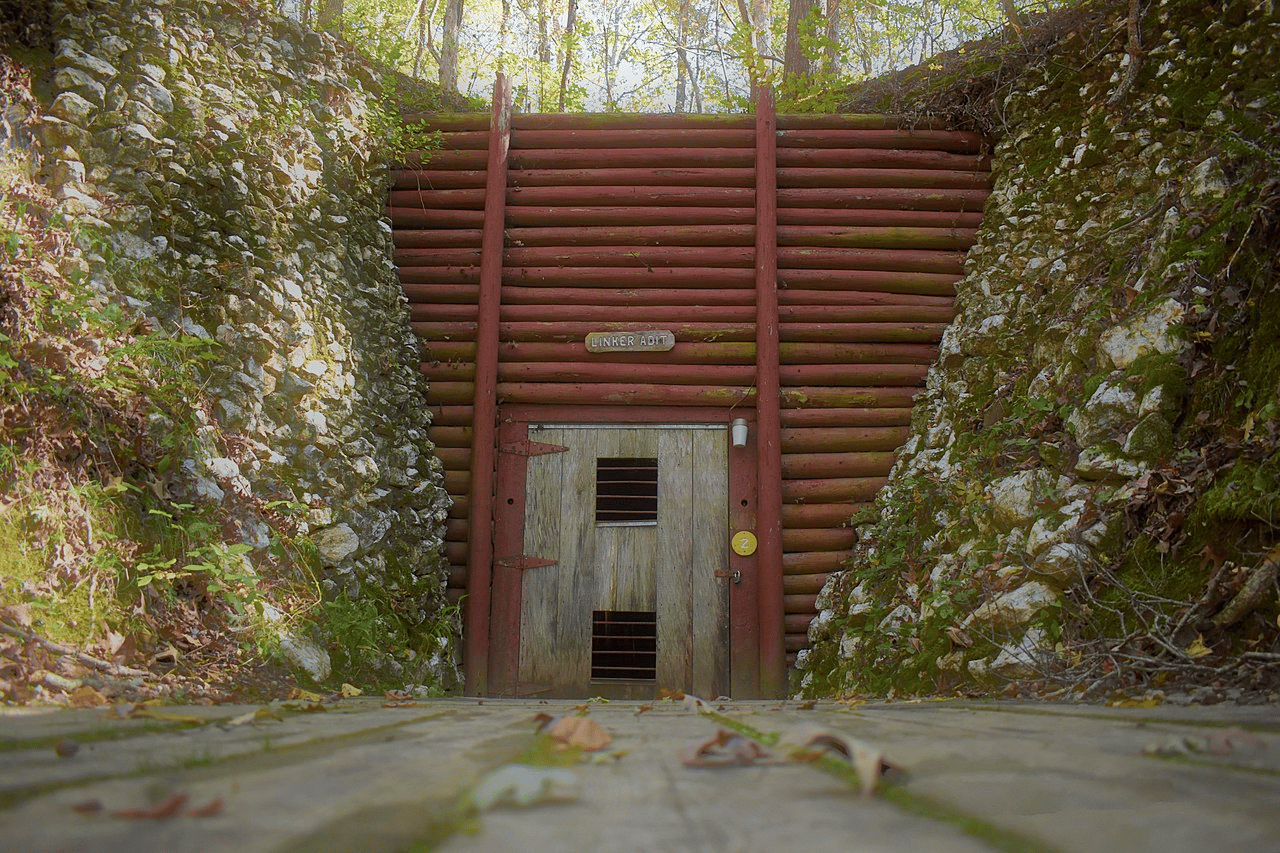
When we put together our list of historic sites we try to make sure that there’s something for everyone understanding that different people find different historical topics appealing.
Our next historic site is definitely different. It was the site of the first documented gold find in the United States. At #8 on our list of the Best Historic Sites In North Carolina is the Reed Gold Mine.
The discovery of gold at the mine in 1799 played a significant role in the state’s history and economy.
At the peak of gold mining, it was the second-largest industry to employ North Carolinians, behind farming. The mine was a major source of gold for the United States during the 19th century, and North Carolina was the leading gold-producing state in the country until 1848.
Here Are Some Things You Can Do At Tryon Palace
- Take a palace tour: The Palace is the centerpiece of the site and has been restored to its 18th-century appearance. Visitors can take a guided tour of the palace and learn about its history and the people who lived there.
- Visit the gardens: The Palace gardens are beautiful and feature a wide variety of plants and flowers. Visitors can take a leisurely stroll through the gardens or attend one of the many garden-related events.
- Attend a special event: Tryon Palace hosts a variety of special events throughout the year, including historical reenactments, concerts, and festivals. Check the calendar of events to see what’s happening during your visit.
- Explore the North Carolina History Center: The History Center is a modern building that houses exhibits on North Carolina’s history, including the Native American history, the colonial period, and the Civil War. It also has interactive exhibits, a 3D movie theater, and a museum shop.
- Take a carriage ride: Visitors can take a horse-drawn carriage ride through the historic district and learn about the history of New Bern.
- Attend a workshop or class: Tryon Palace offers a variety of workshops and classes on topics such as gardening, cooking, and crafts. These classes are a great way to learn a new skill or deepen your knowledge of a particular subject.
- Visit the historic buildings: In addition to the Palace, the site also includes several other historic buildings, including the Stanly House, the Dixon House, and the New Bern Academy. Visitors can take guided tours of these buildings and learn about their history.
- Take a riverboat tour: Visitors can take a scenic riverboat tour along the Trent River and learn about the history and ecology of the area.
7. USS North Carolina
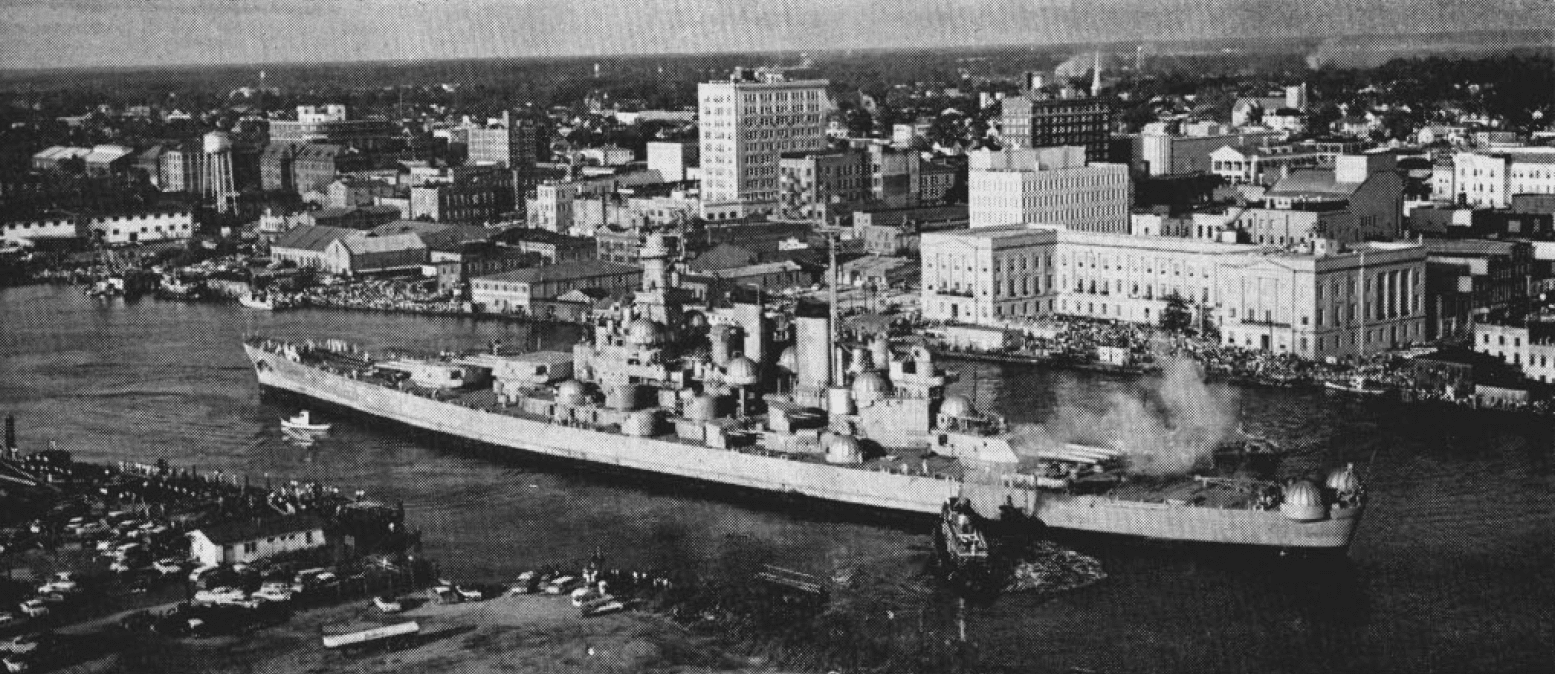
Whatever historical period appeals to you know that the friendly folks at More Than Just Parks are working to find something appealing. In that vein, let’s fast forward from the earliest gold rush to the most destructive conflict in World History.
At #7 on our list of the Best Historic Sites In North Carolina is the USS North Carolina.
The Battleship North Carolina is a historic landmark located in Wilmington, North Carolina, across the Cape Fear River from downtown. It is a retired battleship that saw action in World War II and is now permanently docked as a museum ship.
The ship is a National Historic Landmark and is open to the public for tours. Visitors can learn about the lives of the sailors who served on the ship during WWII, watch an introductory film, and tour the exhibit hall.
They also have the opportunity to explore up to nine levels of the ship, including the engine room, the gun decks, and the captain’s quarters.
Visitors can even pretend to steer the ship, start the engine, or fire one of the guns, providing an interactive and educational experience for visitors of all ages.
It’s an excellent opportunity to step back in time and learn about the history of the ship and its role in World War Two.
6. The International Civil Rights Center & Museum, Greensboro

From the bloodiest conflict in the history of the world to the struggle for civil rights & racial equality in America, our next historic site tells a very different story. At #6 on our list of the Best Historic Sites In North Carolina we have the International Civil Rights Center & Museum.
The International Civil Rights Center & Museum focuses on the history of the civil rights movement in the United States. The museum is housed in the historic F.W. Woolworth building, which was the site of the famous Greensboro sit-ins in 1960.
The museum tells the story of the civil rights movement through a series of interactive exhibits and displays.
Visitors Can Explore The History Of Segregation
Visitors can explore the history of segregation, the struggle for voting rights, and the ongoing fight for social justice. The museum features artifacts, photographs, and videos that document the events and people who played a role in the civil rights movement.
One of the most striking exhibits in the museum is the original lunch counter from the Woolworth building, where the sit-ins took place. Visitors can sit at the counter and experience what it was like to be a part of the sit-ins. Other exhibits include a replica of a jail cell and a recreated Freedom Rider bus.
The museum also offers educational programs for students and teachers, as well as community events and lectures. It is open to the public six days a week, and admission is charged.
The International Civil Rights Center & Museum is a powerful reminder of the struggles and triumphs of the civil rights movement, and a testament to the ongoing fight for equality and justice.
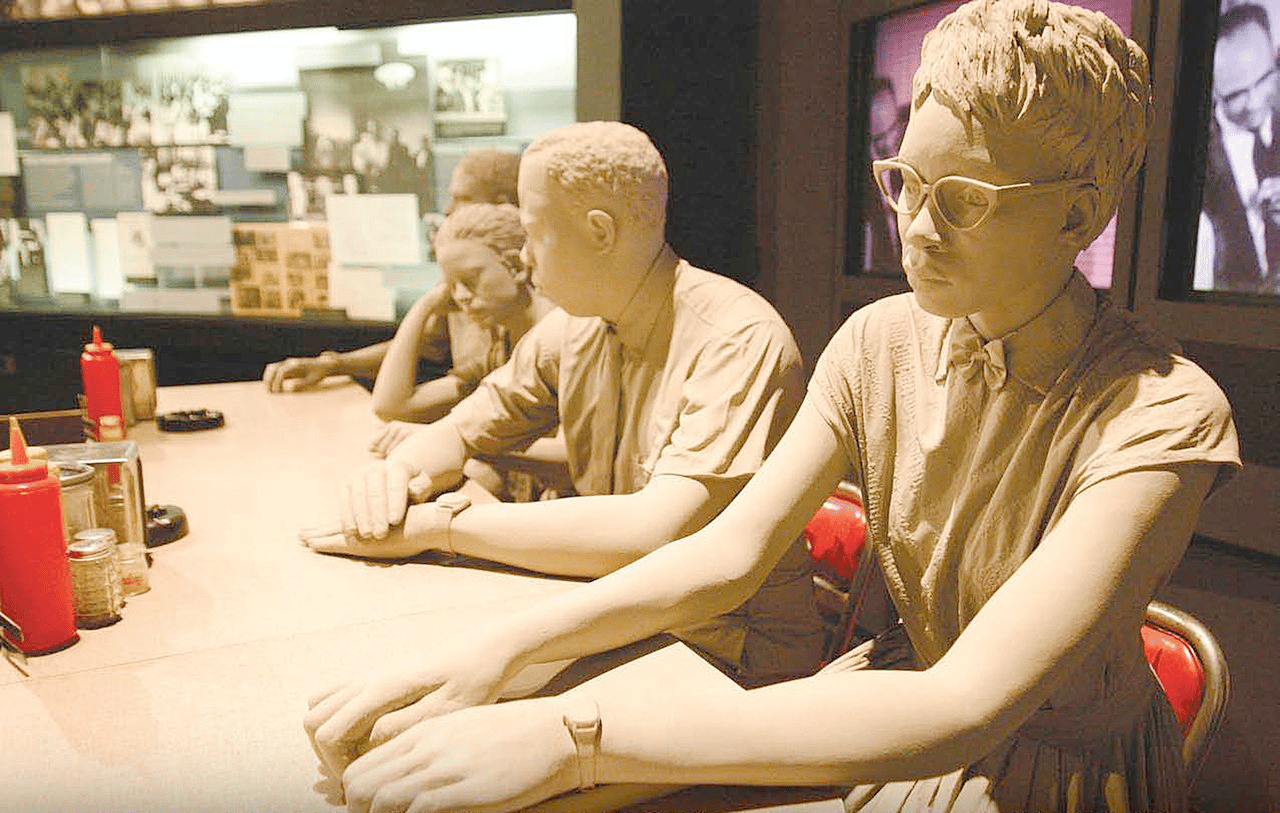
Top 5 Historic Sites In North Carolina
5. Overmountain Victory National Historic Trail
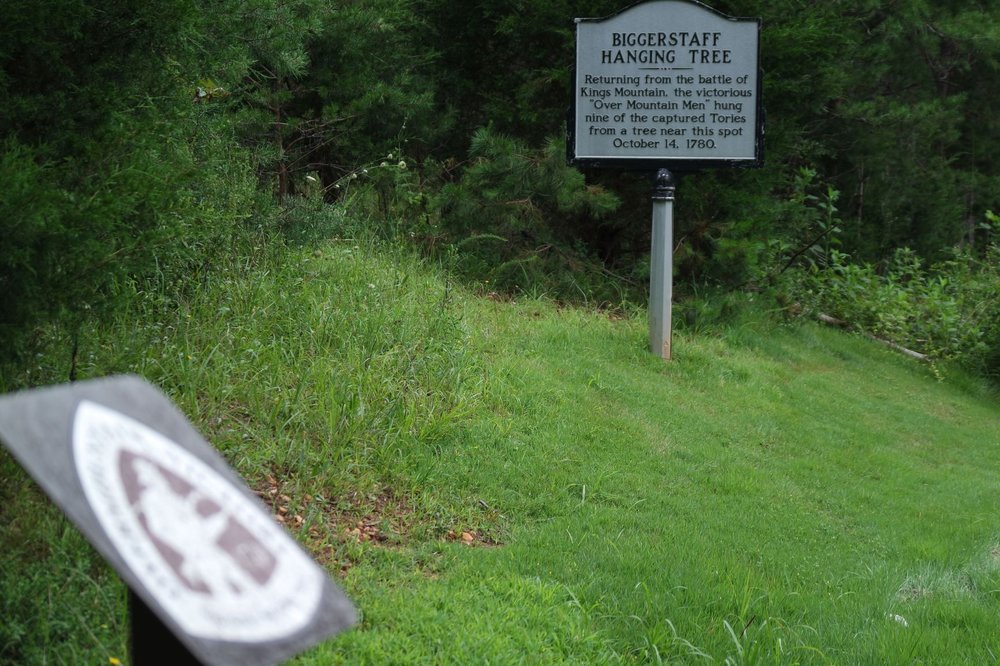
We’re on to the Top 5 Historic Sites In North Carolina and we’ve got some amazing sites left for you to explore. At #5 on our list is the Overmountain Victory National Historic Trail.
This site traces the route that was used by the Patriots during the Kings Mountain Battle of 1780.
The route is 330 miles and it goes through four states (Virginia, Tennessee, North and South Carolina).
You can explore this route by following a Commemorative Motor Route which uses existing state highways. It is marked with a distinctive trail logo and includes 87 miles of walkable pathways.
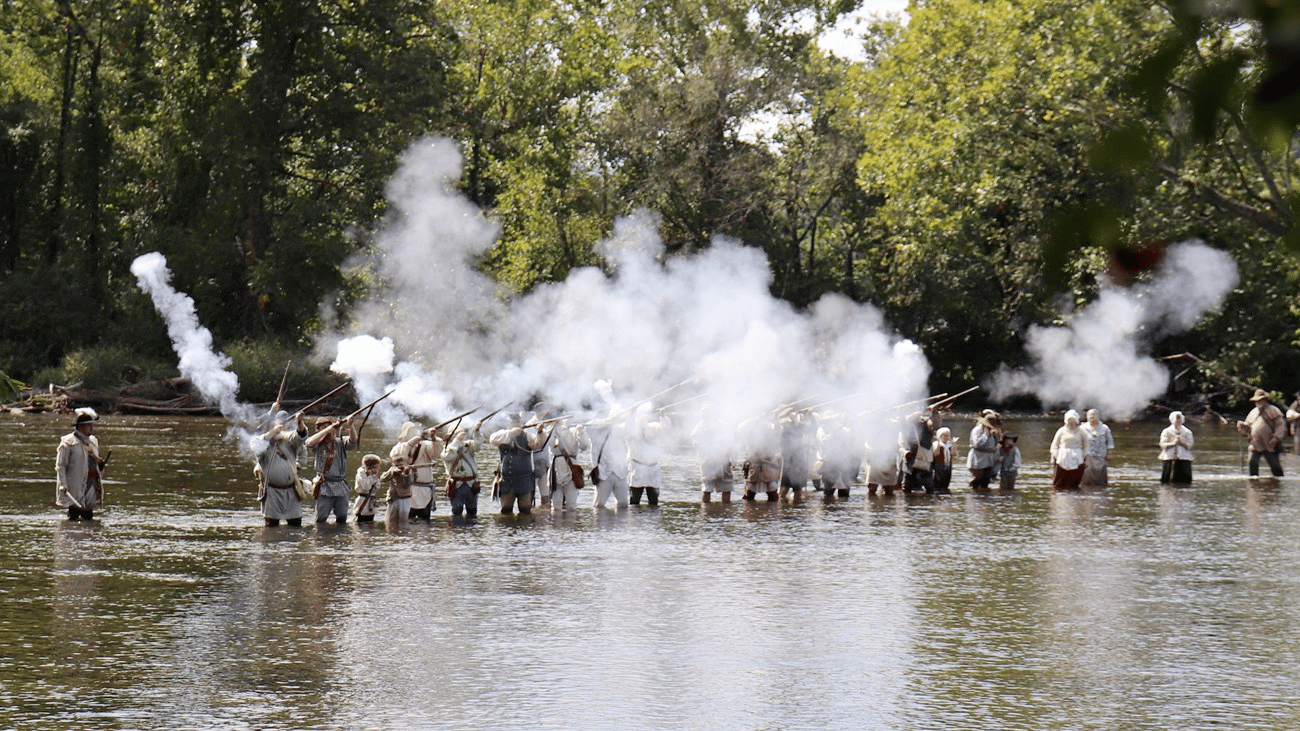
CHECK OUT: 10 BEST Revolutionary War Sites In America
The Battle Of Kings Mountain
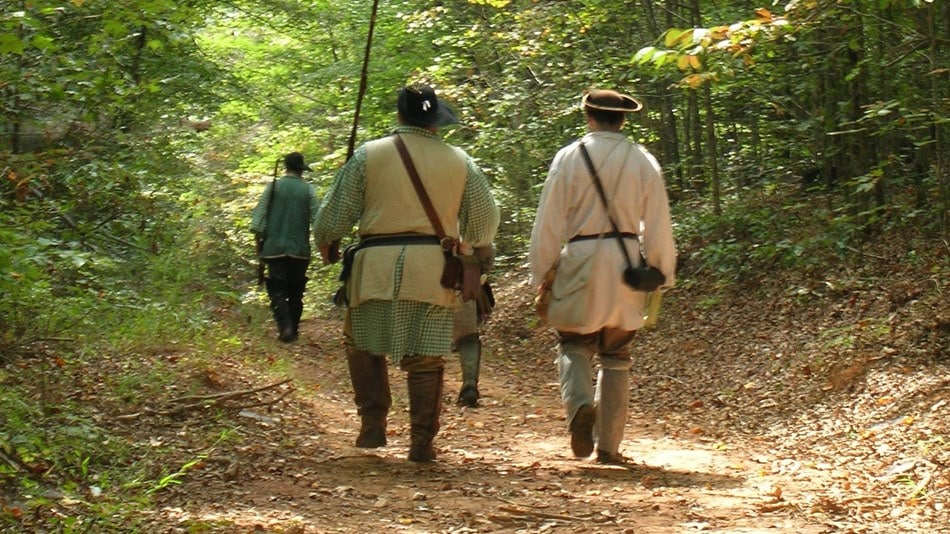
As a retired history teacher, I love to take a deeper dive into the history of these amazing places. In the case of the Battle of Kings Mountain, it actually pitted Patriots against Tories. No British soldiers participated as this was a fight strictly between those who wanted to break free of British rule versus those who didn’t.
A force of 1,800 backcountry or “Overmountain” men defeated a force of 1,000 Tories at King’s Mountain on October 7, 1780.
According to British commander Henry Clinton, the American victory “proved the first Link of a Chain of Evils that followed each other in regular succession until they at last ended in the total loss of America.”
“The turn of the tide of success.”
-Thomas Jefferson’s description of the battle of kings mountain
What You Can See In North Carolina | Overmountain Victory National Historic Trail
The following sites along the Overmountain Victory National Historic Trail are in North Carolina:
- Trail #308 & Road #5545 – Yellow Mtn. Gap, Avery Co. – 1.5 Miles
- Overmountain Victory NHT – Elkin, NC – 3.75 Miles
- Yadkin River Greenway – Wilkesboro, NC – 7 Miles
- Overmountain Victory NHT – W. Kerr Scott Dam & Reservoir – 11 Miles
- Yadkin River Greenway – Caldwell County, NC – 1 Mile
- Patterson School Overmountain Trail – Caldwell County – 1 Mile
- Gillespie Gap – Blue Ridge Parkway, NC – 5.75 Miles
- Rose Creek Trail – West Side of Blue Ridge Parkway, MP 326 – 1.4 Miles
- Black Bear Tract Trail – North Shore of Lake James – 2.1 Miles
- Trail #308G & Road #1238 – Pisgah National Forest – 4.1 Miles
- 1780 Community – North Shore of Lake James – 1 Mile
- Paddy’s Creek Trail – New Part of Lake James State Park – 2.3 Miles
- Overmountain Victory NHT – Lake James State Park – 1.5 Miles
- Catawba River Greenway – Morganton, NC – 5 Miles
- Overmountain Victory NHT – Rutherfordton, NC – 3 Miles
- Alexander’s Ford Trail – Polk Co., NC – 2 Miles
- Overmountain Vineyards – Polk Co., NC – 1 Mile (Source: NPS)
CHECK OUT: 15 MUST-SEE HISTORIC SITES IN GEORGIA
4. Fort Raleigh National Historic Site
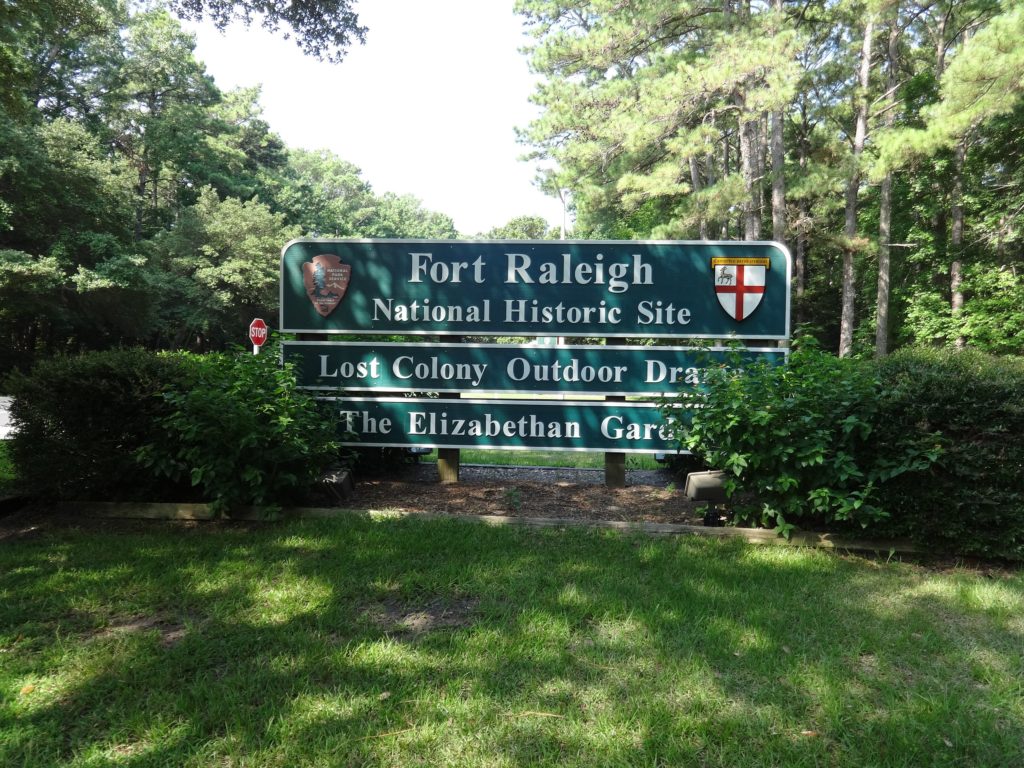
We’re on to the “Final Four.” At #4 on our list of the Best Historic Sites In North Carolina we go back to the origins of America and examine an historic fort which was part of the settlement of the New World. It’s Fort Raleigh National Historic Site.
Things To See & Do At Fort Raleigh
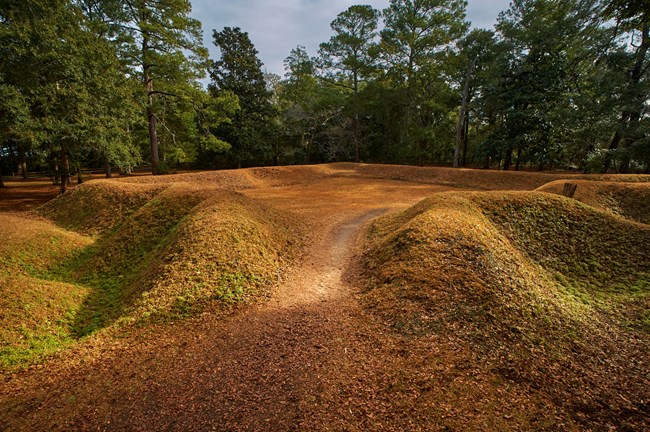
At Fort Raleigh, you can learn the story of England’s first New World settlements from 1584 to 1590. You’ll take a journey back to the Roanoke of the 1500s. Roanoke Island became known to the English on an exploratory voyage in 1584.
Shrouded in mystery and suspense, the establishment of a military colony in 1585 and a settlement colony in 1587 would become famous as the “Lost Colony of Roanoke.” Roanoke was an attempt by Sir Walter Raleigh to found the first permanent English settlement in North America.
Following the failure of this settlement, a second colony arrived in 1587. It landed on the same island and became known as the Lost Colony due to the subsequent unexplained disappearance of its population.
Hike The Freedom Or Thomas Hariot Trail At Fort Raleigh
If you want to get your history and your exercise there are some excellent hiking opportunities at Fort Raleigh. There’s the Freedom Trail which takes hikers through a maritime forest. It’s a 1.25-mile trail that ends with views of the Croatan Sound on the western edge of the park.
There’s also the Thomas Hariot Trail. It’s a 0.3-mile loop through the island’s maritime forest to the sandy shores of Albemarle Sound. Along the way hikers will see interpretive signs describing the forest habitat, the Algonquian methods for gathering food.
There’s also a reconstructed earthwork which includes copper nuggets, charcoal, antimony ore and furnace bricks. These could be the workshop site of Joachim Gans, a metal expert on the 1585 expedition.
And there’s the First Light of Freedom monument. It commemorates the Roanoke Island Freedman’s Colony that was set up during the American Civil War. The colony provided a safe haven and education for the formerly enslaved to help prepare them for a new life.
3. Carl Sandburg Home National Historic Site
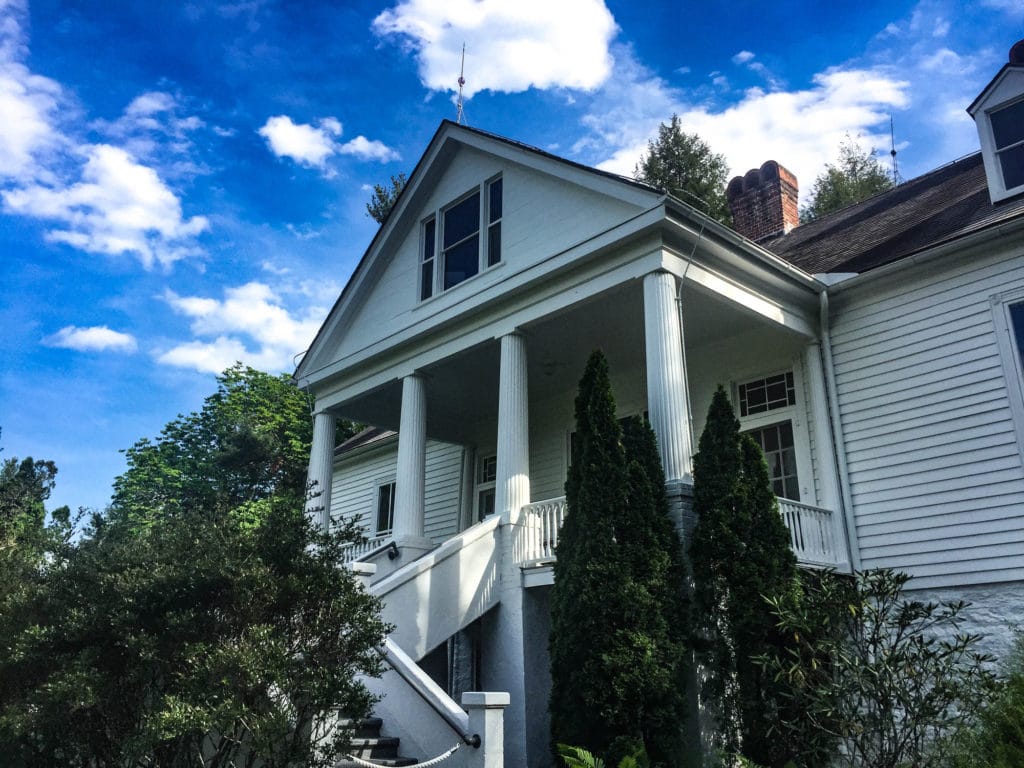
We’re moving on to our #3 site which celebrates one of America’s greatest literary figures. At #3 on our list of the Best Historic Sites In North Carolina is the Carl Sandburg Home National Historic Site.
Most authors can only dream of winning a coveted Pulitzer Prize in literature. Carl Sandburg won three Pulitzer Prizes: two for his poetry and one for his biography of Abraham Lincoln.
During his lifetime, Sandburg was widely regarded as “a major figure in contemporary literature”, especially for volumes of his collected verse, including Chicago Poems (1916), Cornhuskers (1918), and Smoke and Steel (1920).
Sandburg’s Lincoln is regarded by many historians as the definitive biography of the man and his times. It is and always will be the “gold standard.”
Things To See & Do At Carl Sandburg’s Home
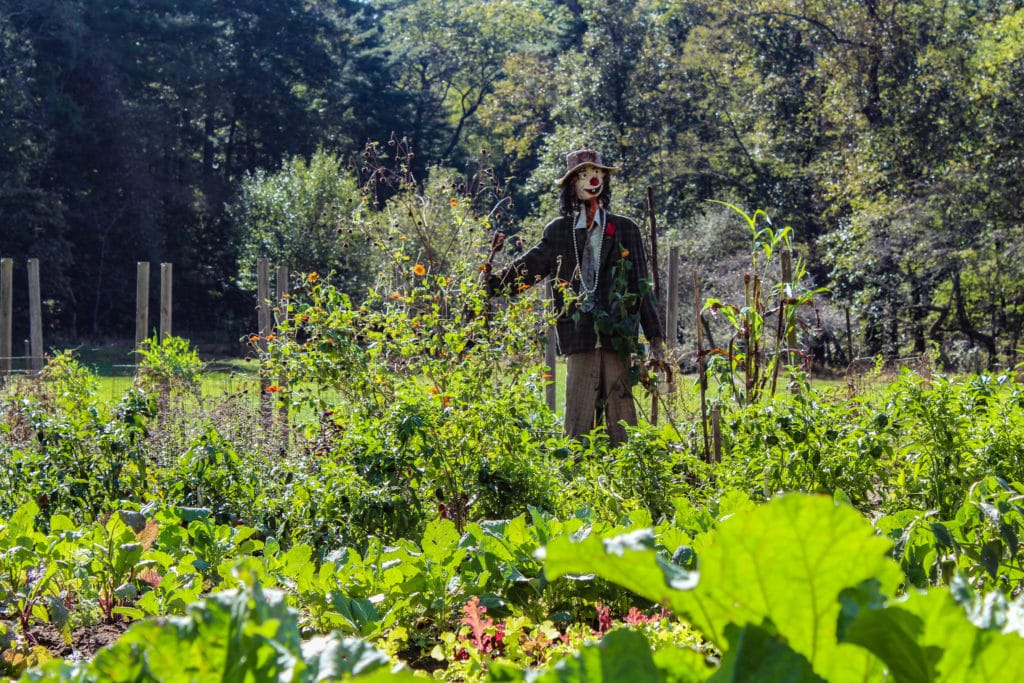
The park is located on 264 acres in western North Carolina. Visitors can tour the Sandburg Home They can also hike on over 5 miles of trails.
While there, you can visit the farm and dairy goats, and much more. The average visitor spends two hours at “Connemara.”
And the best news of all is that it’s free to enter the park, access the bookstore and information in the ground floor of the Sandburg Home, walk the trails and visit the barn. If you’re planning on touring the house there is a fee for that.
CHECK OUT 20 MUST-SEE HISTORIC SITES IN NEW YORK
2. Guilford Courthouse National Military Park
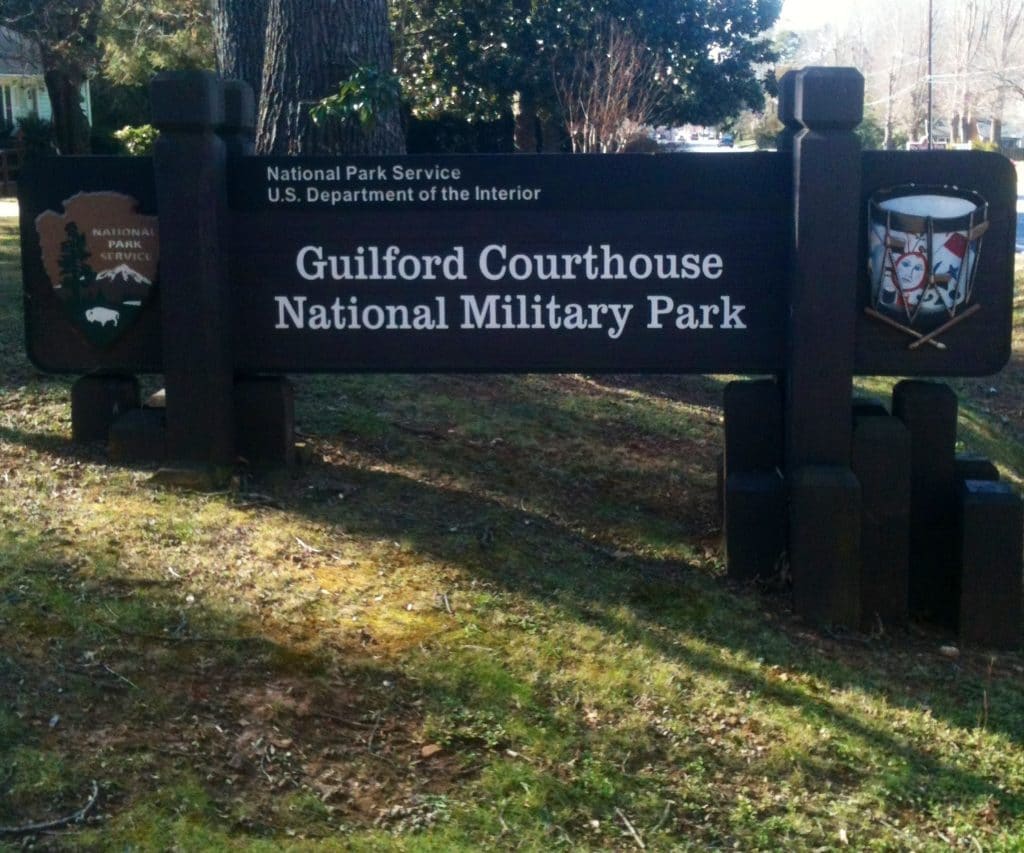
We’re down to our final 2 historic sites which are both truly amazing places. In the runner-up spot at #2 is the Guilford Courthouse National Military Park which celebrates a pivotal battle of the American Revolutionary War.
The Battle of Guilford Courthouse was considered a victory within a defeat. It was on of the pivotal battles of the American Revolutionary War. It took place on March 15, 1781.
The British troops under Lieutenant General Charles Cornwallis (1738-1805) scored a tactical victory at Guilford Courthouse over American forces under Major General Nathanael Greene (1742-86). Nevertheless, the British suffered significant troop losses during the battle.
Afterward, Cornwallis abandoned his campaign for the Carolinas and instead took his army into Virginia, where in October of that year he surrendered to General George Washington (1732-99) following the Battle of Yorktown, the last major land battle of the war.
CHECK OUT 15 MUST-SEE HISTORIC SITES IN PENNSYLVANIA
Things To Do At Guilford Courthouse

Here are some things you can do at the park:
- Explore the Visitor Center: The Visitor Center at Guilford Courthouse National Military Park offers a wealth of information about the battle and the American Revolution. You can watch a short film, see exhibits, and talk to rangers to learn more about the park’s history.
- Take a guided tour: The park offers guided tours led by rangers or volunteers. These tours provide a more in-depth experience and allow you to learn more about the battle and its significance.
- Walk the battlefield trails: The park has several walking trails that allow you to explore the battlefield and see the key locations where the battle was fought. You can follow the trails at your own pace and stop to read interpretive signs along the way.
- Attend living history events: Throughout the year, the park hosts living history events that recreate aspects of life during the Revolutionary War. These events can include reenactments of the battle, demonstrations of colonial-era crafts, and talks by historians and authors.
- Visit the Hoskins Farm: The Hoskins Farm was the site of a crucial part of the battle and is now a historic farmstead within the park. You can tour the farmhouse, see the farm animals, and learn about daily life on a farm during the Revolutionary War.
- Attend special events: In addition to living history events, the park also hosts special events throughout the year, such as concerts, lectures, and book signings.
- Enjoy the park’s natural beauty: The park is home to a variety of wildlife and features beautiful landscapes. You can take a picnic, go birdwatching, or simply enjoy the peace and quiet of the natural surroundings.
1. Wright Brothers National Memorial
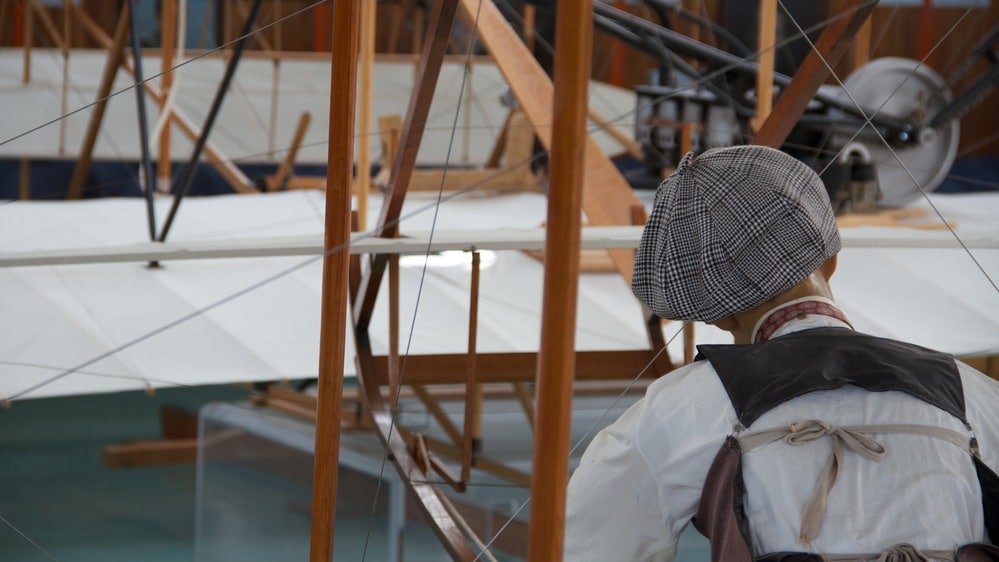
Drumroll please! More Than Just Parks has selected as the #1 Historic Site In North Carolina The Wright Brothers National Memorial. Two wrongs don’t make a right, but two Wrights made an airplane which revolutionized the history of aviation.
On December 17, 1903, Orville & Wilbur Wright, otherwise known as the Wright Brothers, ushered in the aerial age with their successful first flight of a heavier-than-flying machine at Kitty Hawk, North Carolina.
This airplane, known as the Wright Flyer, was the product of a sophisticated four-year program of research and development conducted by the brothers beginning in 1899.
Together, these two aeronautical visionaries pioneered many of the basic tenets and techniques of modern aeronautical engineering, such as the use of a wind tunnel and flight testing as design tools.
The impact of the airplane on the 20th century is beyond measure. The Wrights not only solved a long-studied technical problem, but also helped create an entirely new world.
“The desire to fly is an idea handed down to us by our ancestors who, in their grueling travels across trackless lands in prehistoric times, looked enviously on the birds soaring freely through.”
-Orville Wright
Things To Do & See At The Wright Brothers National Memorial
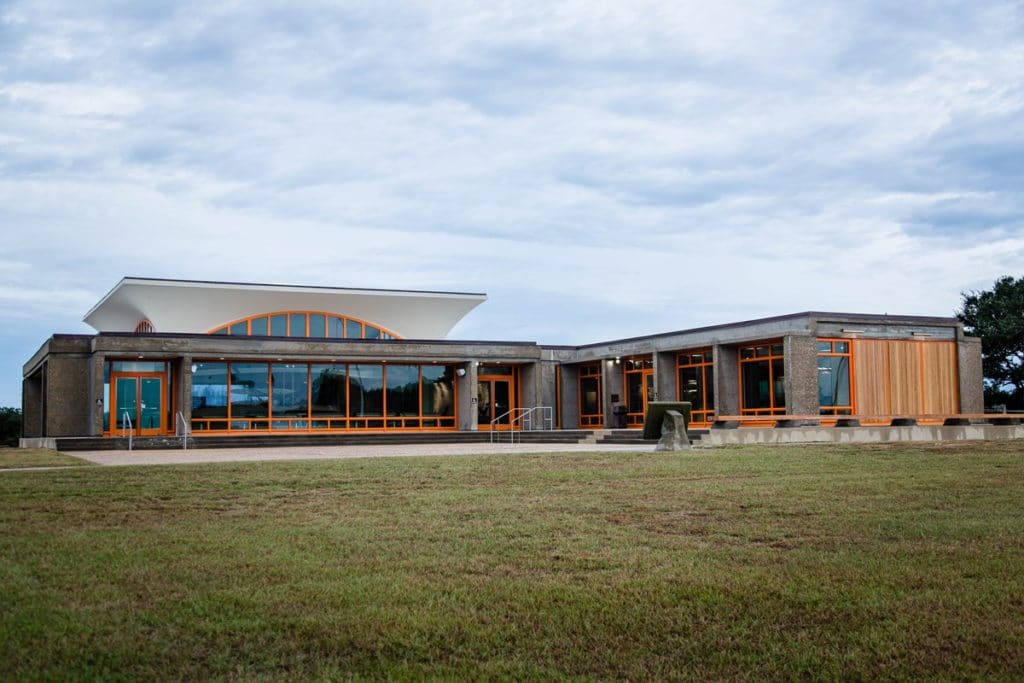
Here are some things to do and see at the memorial:
- Visit the Visitor Center: The Visitor Center at the Wright Brothers National Memorial has exhibits and artifacts that tell the story of the Wright Brothers and their achievements. There is also a bookstore and a theater that shows a film about the Wright Brothers’ historic flight.
- See the First Flight Boulder: The First Flight Boulder marks the spot where the Wright Brothers took off on their first powered flight on December 17, 1903. It is located near the Visitor Center and is a popular spot for photos.
- Walk the Flight Line: The Flight Line is a path that follows the course of the Wright Brothers’ first four flights. Along the way, there are markers that indicate where each flight took off and landed. You can walk the Flight Line and imagine what it must have been like for the Wright Brothers to take to the air for the first time.
- Climb the Wright Brothers Memorial: The Wright Brothers Memorial is a 60-foot-tall granite monument that honors the Wright Brothers’ achievements. Visitors can climb to the top of the monument for a stunning view of the surrounding area.
- Attend a Ranger Talk: The park rangers at the Wright Brothers National Memorial offer talks and demonstrations throughout the day. These talks cover a variety of topics, from the science of flight to the history of the Wright Brothers’ accomplishments.
- Explore the Outer Banks: The Wright Brothers National Memorial is located on the Outer Banks of North Carolina, a beautiful area with miles of beaches, wildlife refuges, and historic lighthouses. Take some time to explore the area and enjoy the natural beauty of the coast.
CHECK OUT 15 MUST-SEE HISTORIC SITES IN OHIO
List Of Historical Sites In North Carolina
- Wright Brothers National Memorial
- Guilford Courthouse National Military Park
- Carl Sandburg Home National Historic Site
- Fort Raleigh National Historic Site
- Overmountain Victory National Historic Trail
- The International Civil Rights Center & Museum, Greensboro
- USS North Carolina
- Reed Gold Mine
- Tryon Palace Historic Sites & Garden
- Fort Fisher
Why Trust Us About Historic Sites In North Carolina?
We’re Jim Pattiz and Will Pattiz, collectively known as the Pattiz Brothers and we absolutely LOVE the national parks.
You should probably know that we don’t just make this stuff up out of thin air. We’ve spent our entire adult lives exploring and filming America’s national parks and public lands.
We’ve worked with the National Park Service, the Department of Interior, USDA, U.S. Forest Service, and more for years creating films on important places and issues. Our work has been featured in leading publications all over the world and even some people outside of our immediate family call us experts on the national parks.
And, in 2018, our father – having spent a lifetime teaching history – joined us so that he could help us to tell the stories behind these amazing places.
Meet The Parks Brothers
We Hope You’ll Follow Our Journey
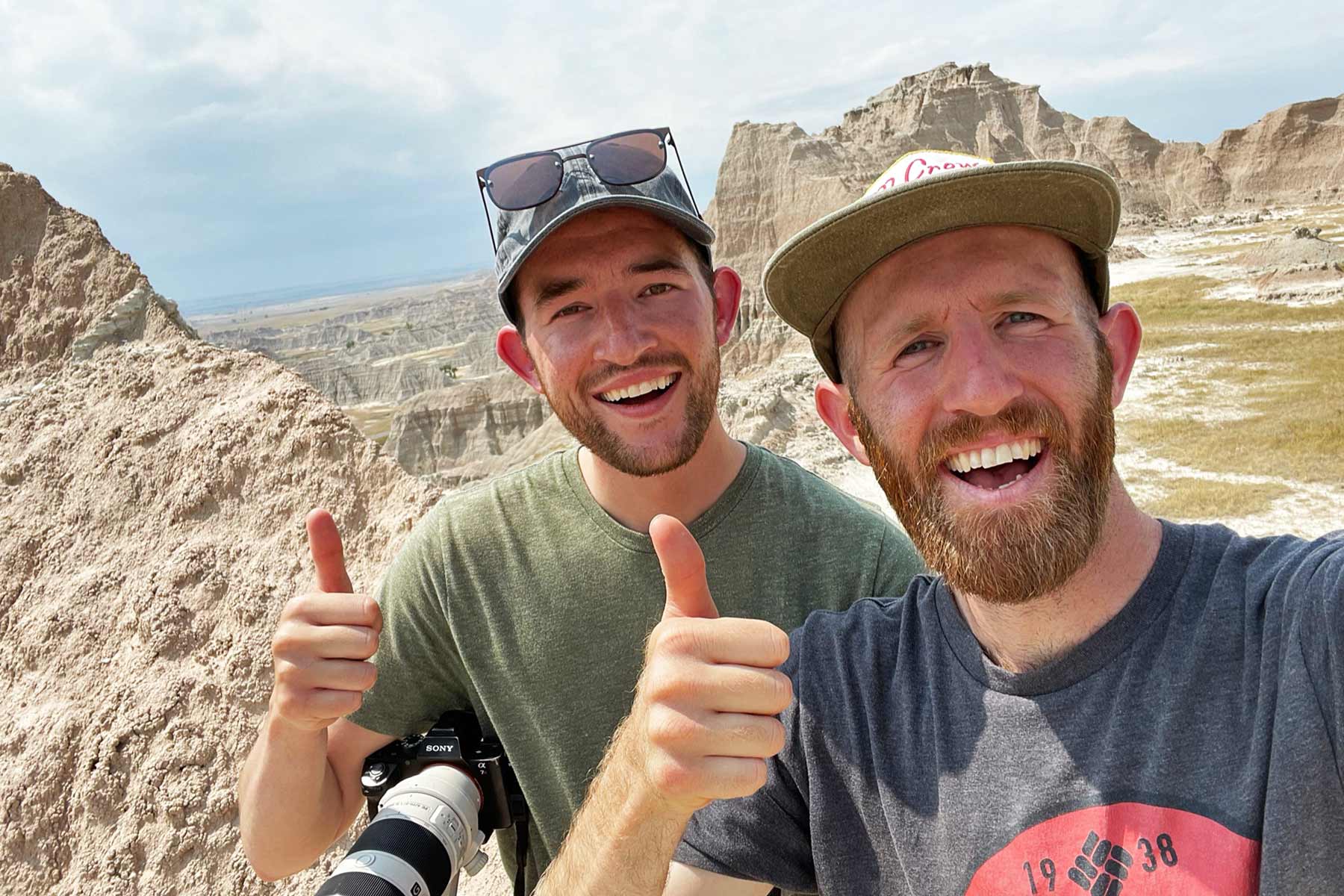
Our goal here at More Than Just Parks is to share the beauty of America’s national parks and public lands through stunning short films in an effort to get Americans and the world to see the true value in land conservation.
We hope you’ll follow our journey through the parks and help us to keep them the incredible places that they are. If you’re interested in joining the adventure then sign up below!
Related Links
What Is A National Park? To learn more about the difference between the various National Park Service designations check out our article that explains everything!
North Carolina National Parks: 12 EPIC North Carolina National Parks
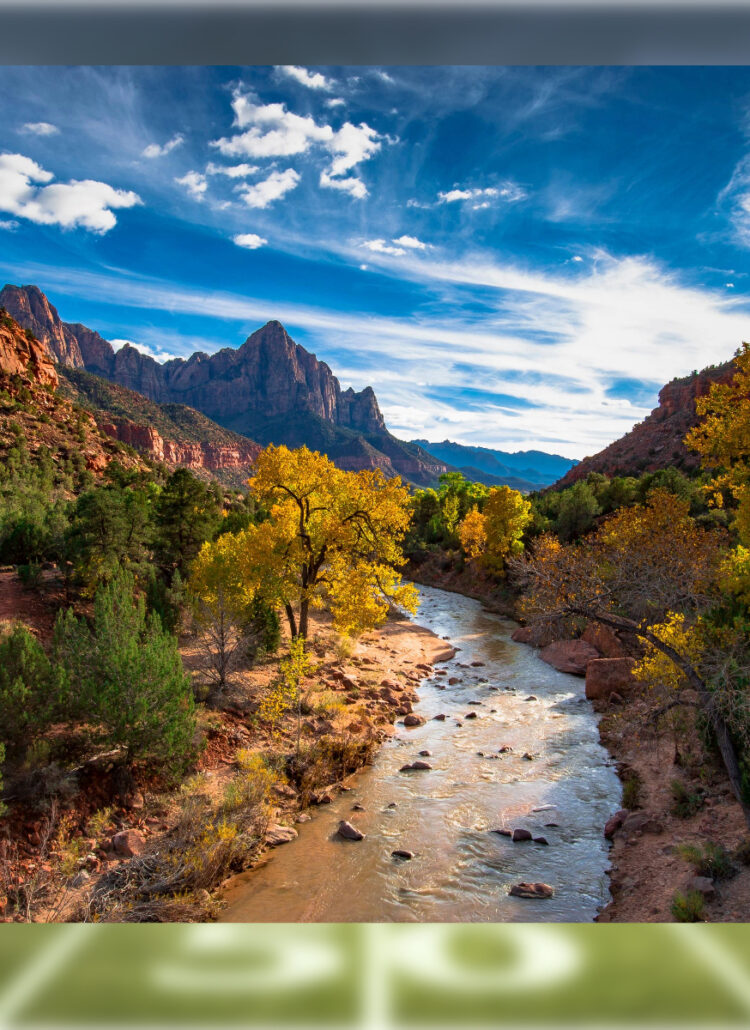
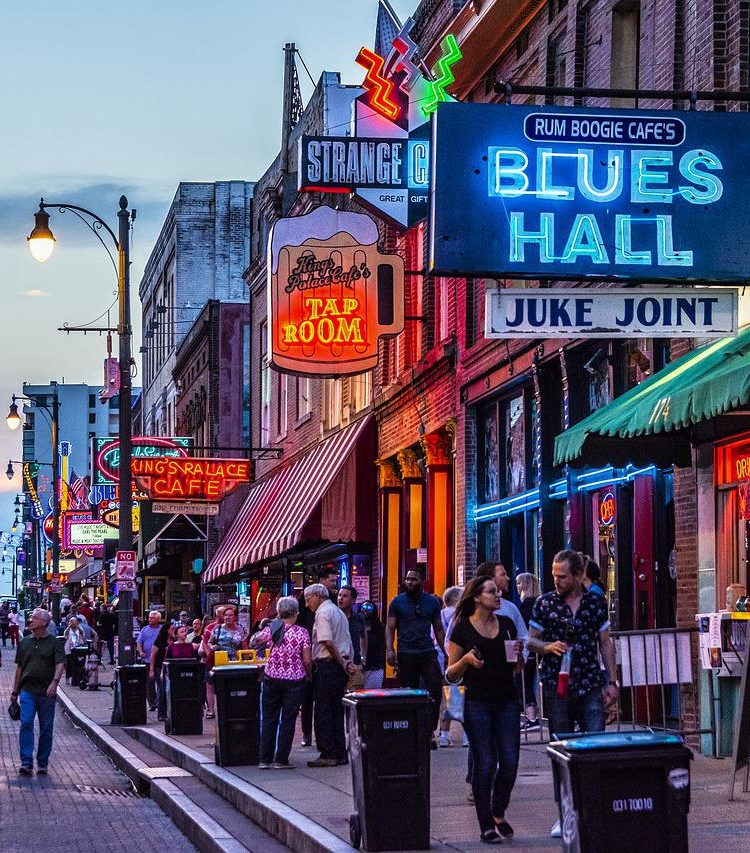
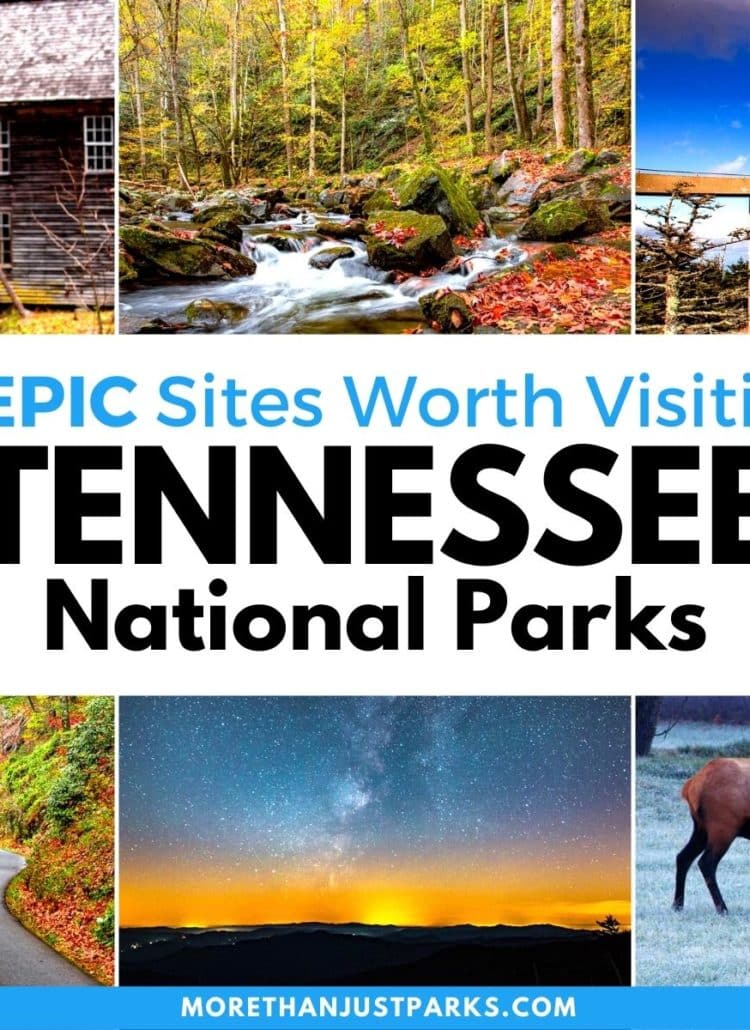
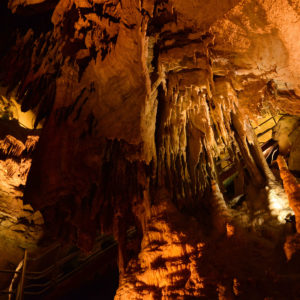
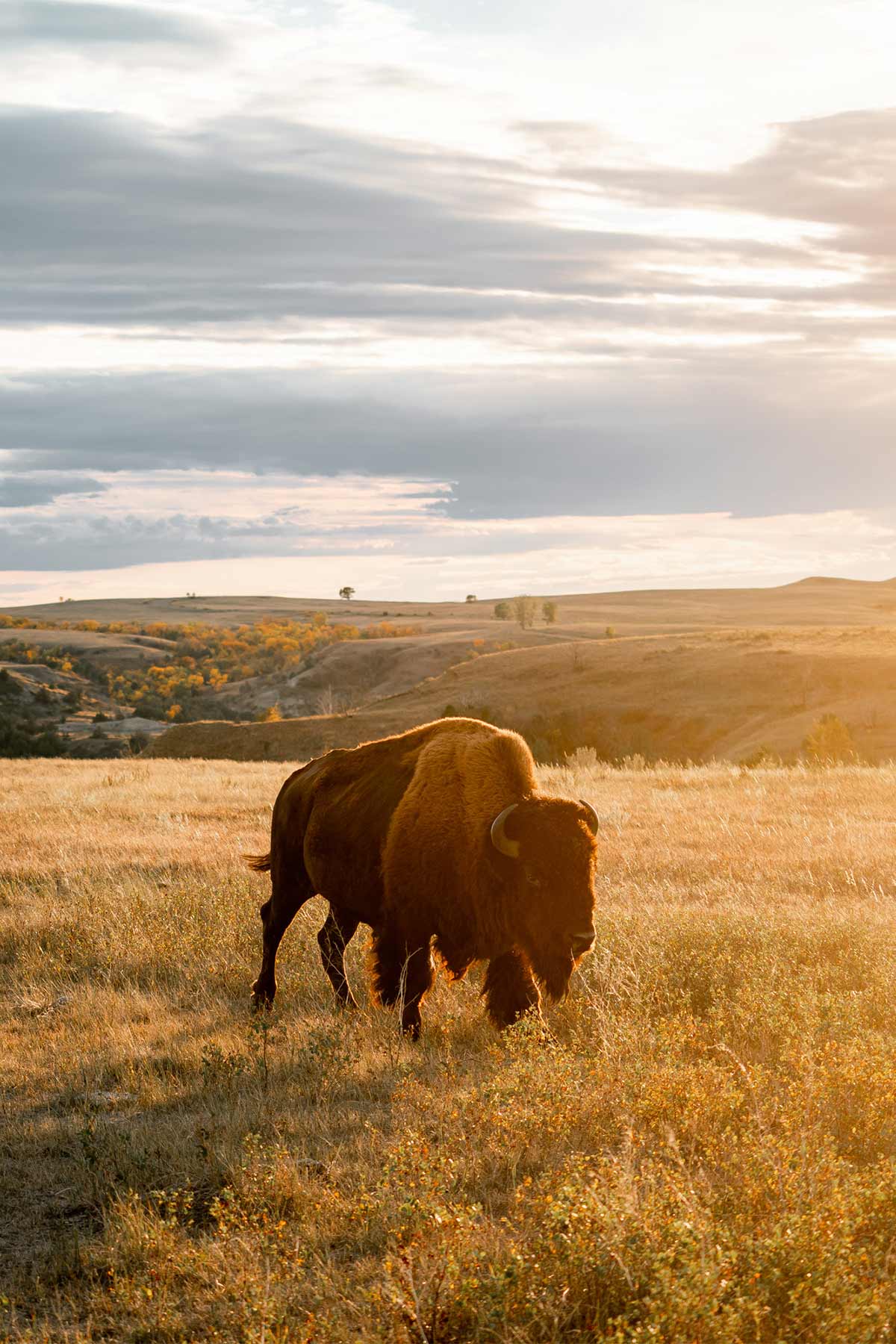
Leave a Reply